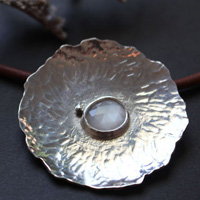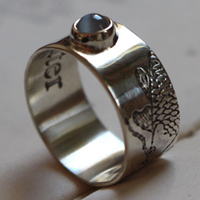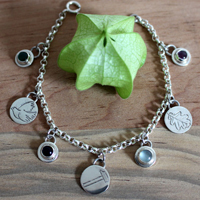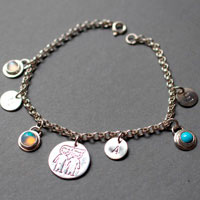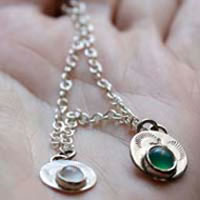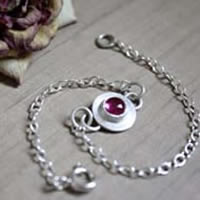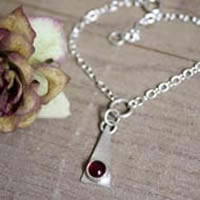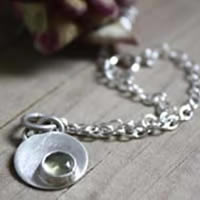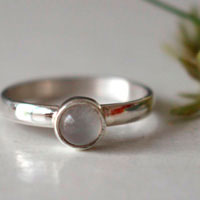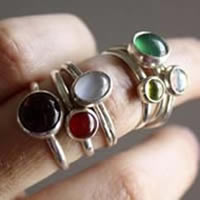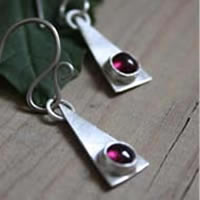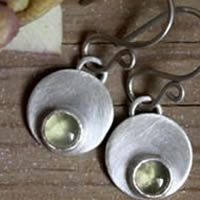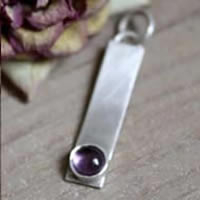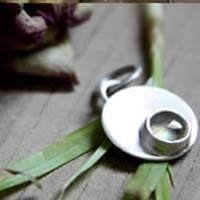- Jewelry
- Inspiration
- Our imagination
- Birthstones
- Celebrating with Eternal Flowers
- Druids and druidesses
- Flower meanings
- History, archeology jewelry
- History and healing properties of metals
- History and healing properties of stone
- Illumination jewelry
- Japanese symbols
- Maya calendar jewelry
- Stone color symbolism
- Stones catalogue
- Wedding anniversaries
- Searches a theme on the site
- Good Deals
- Paintings
- About
- Contact
JEWELRY
- Anklet
- Bracelets
- Brooches
- Cufflinks
- Earrings
- Pendants & Necklaces
- Rings
- Draw your jewelry
- How to clean your jewel
- Metal we used
INSPIRATION
- Our imagination
- Birthstones
- Celebrating with Eternal Flowers
- Druids and druidesses
- Flower meanings
- History, archeology jewelry
- History and healing properties of metals
- History and healing properties stones
- Illumination jewelry
- Japanese symbols
- Maya calendar jewelry
- Stone color symbolism
- Stones Catalogue
- Wedding anniversaries
- Searches a theme on the site
Moonstone: history, healing properties and lithotherapy
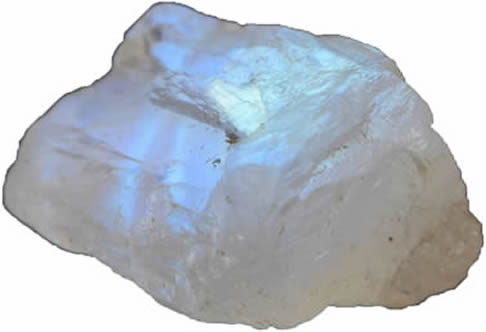
Moonstone properties
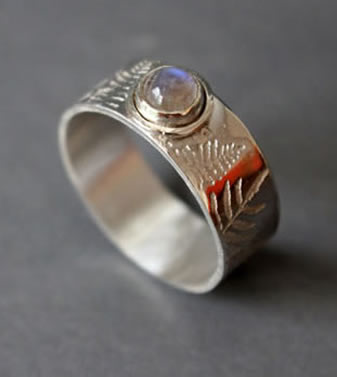
The moonstone, a gem of rare preciousness among feldspars, unveils an enchanting glow: a bluish sheen that dances and drifts like a mirage, captivating the eye as soon as it is touched by light. This enigmatic optical property, known as adularescence, arises from delicate micro-inclusions of feldspar interwoven in a unique manner throughout the moonstone. This phenomenon results from a diffraction effect caused by the interference of light on the gem’s fine internal lamellae, formed through alternating layers of orthoclase and albite during its cooling process. Thus, the moonstone offers a celestial and mystical display to those who behold it, akin to a lunar glow floating on the surface of calm waters.
Moonstone belongs to the feldspar family, specifically to the potassium feldspar group, and is a variety of adularia. Its monoclinic crystal system grants it an orderly internal structure that enhances its unique optical effects. It has a hardness of 6 to 6.5 on the Mohs scale, making it relatively durable yet sensitive to shocks and scratches. Its density ranges between 2.55 and 2.63, and it can be translucent to nearly transparent.
The most renowned moonstone deposits are found in Sri Lanka, where specimens stand out for their intense bluish sheen and exceptional transparency. However, this mesmerizing gem is also extracted in many other regions worldwide. It emerges from the depths of the crystalline slates of the majestic Alps, nestled within ancient geological formations. It is also found in India, where it sometimes takes on warmer hues, leaning toward orange or peach. Other notable deposits exist in Brazil, Madagascar, the United States, and even on the slopes of Mount Vesuvius, where it forms in volcanic rocks.
Some moonstone specimens exhibit a more pronounced chatoyancy, while others display a slight cat’s eye effect or a silvery glow. Although its most prized color is white with bluish reflections, it can also appear in shades of cream, gray, pink, or brown, depending on its chemical composition and the presence of inclusions.
Mines: Sri Lanka, Australia, Brazil, India, Tanzania, Madagascar, Spain, Italy, Switzerland, Burma and the USA.
Stories, beliefs and legends about the moonstone
In the rich mythology of Hinduism, the moonstone is intrinsically linked to the moon itself. According to ancient Hindus, this radiant gem was considered a manifestation of solidified moonbeams, capturing the pure essence and nocturnal magic of this celestial body. It was dedicated to Chandra, the moon god, who is often depicted wearing a crescent moon on his forehead. Sacred texts, particularly the Shiva Purana, refer to the moonstone as a divine gem associated with wisdom and fertility. It was believed to awaken intuition and promote inner balance, reflecting the lunar phases and their influence on human emotions.
In Greek mythology, the moonstone was closely tied to the mysterious power of the night, personified by Nyx, the primordial goddess of darkness and mother of dreams. This luminous gem was also revered as the sacred stone of Selene, the goddess of the full moon, whose gentle light illuminated the night skies. It is said that Selene’s priestesses used moonstones in their rituals to commune with lunar energies and enhance their prophetic visions. Some Greek temples even housed altars adorned with these gems, strategically placed to capture moonlight and diffuse a sacred glow during nighttime ceremonies.
For the Romans, the moonstone was seen as a magical fusion of moonlight drops, capturing the mystical and feminine radiance of the nocturnal sky. It was particularly associated with Diana, the goddess of the hunt and the moon, embodying femininity, instinct, and the protection of women. The Romans believed that the moonstone possessed the power to enhance divination abilities and guide wandering souls through darkness. Many legends suggest that it could reveal the secrets of the future to those who knew how to observe it under the right light.
In North America, the moonstone held a sacred place in the cosmology of the Sioux, closely associated with Hanwi, the lunar goddess often called the "sun of the night." According to Sioux traditions, Hanwi watched over her people during the dark hours, offering her soothing light and warding off malevolent spirits of the night. Shamans used moonstones in ceremonies designed to encourage prophetic dreams and strengthen the connection between the spirit world and the living. This belief was part of a broader vision in which the moon was seen as a spiritual guide, illuminating the path of souls after death.
In popular folklore, a fascinating belief surrounded the moonstone: it was considered a gateway to the future during full moon nights. According to this tradition, gently placing a moonstone in one’s mouth during this magical period would open the doors of divination, offering a fleeting glimpse into what was to come. This practice was particularly widespread in medieval Europe, where some alchemists and mages used it to refine their perception of the universe’s energetic flows.
Renowned as a devoted protector of travelers, the moonstone has endured through the ages as a precious amulet. Since antiquity, adventurers have worn it, enveloping their journeys in its aura of benevolent protection. Roman and Greek sailors regarded it as a navigational stone, guiding their ships under the moonlight and bringing them good fortune at sea. In some Eastern cultures, it was sewn into the garments of nomads and caravan travelers crossing deserts, as it was believed to illuminate the path of those who traveled by night.
Its protective power was thought to grow stronger when darkness enveloped the world, and the moon’s silvery glow reflected upon still waters. In these magical moments, the moonstone revealed its inner strength, guiding travelers through the night and danger with a gentle, reassuring light. It was also used in India, where it was placed under the pillows of travelers to ensure peaceful dreams and ward off nightmares during nights spent far from home.
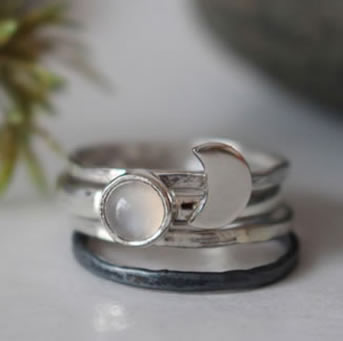
Healing properties and benefits of the moonstone
Throughout human history, man has attributed various healing properties, virtues, and beliefs to moonstone. The information presented here is shared for cultural and historical purposes, to illustrate the symbolic relationship between this stone and man throughout time and civilizations. It does not constitute a therapeutic or medical recommendation.
- Traditionally, the moonstone is associated with feminine cycles and fertility. It is said to help regulate hormonal imbalances, alleviate menstrual pain, support a harmonious pregnancy, and assist with transitions like menopause. It is also believed to have beneficial effects on lactation and postpartum recovery.
- The moonstone is reputed for soothing skin imperfections, easing allergies, and promoting healing. Its regulating action extends to the scalp, where it is said to strengthen roots and stimulate hair growth.
- By aiding digestion and reducing water retention, the moonstone helps eliminate toxins and supports proper kidney function.
- Its gentle vibration is thought to have a calming effect on the nervous system, reducing stress and anxiety. It promotes restorative sleep by warding off nightmares and creating a sense of inner security.
- In the chaos of decision-making, the moonstone intuitively lights the way, encouraging one to listen to inner wisdom rather than solely relying on rationality. It stimulates extrasensory abilities and enhances the perception of synchronicities.
- Linked to lunar cycles, the moonstone accompanies periods of transformation, encouraging inspiration and creativity. It nurtures desires for renewal, supports artistic expression, and facilitates the emergence of new ideas.
- Through its connection with the moon, the moonstone acts as an emotional regulator, helping to soothe tension, excess anger, or deep sorrow. It encourages openness to others and softens relationships, particularly those related to romantic emotions.
- The moonstone shares a close connection with sunstone (heliolite), forming a complementary duo where the former symbolizes feminine energies (receptivity, intuition, gentleness) and the latter represents masculine energies (vitality, strength, radiance). Together, they contribute to cosmic balance, harmonizing the opposing yet inseparable forces of yin and yang.
 Please note that all healing properties attributed to stones come from ancient traditions and various cultural sources. This information is provided for informational purposes only and does not constitute medical advice. In case of any health concerns, it is recommended to consult a qualified professional.
Please note that all healing properties attributed to stones come from ancient traditions and various cultural sources. This information is provided for informational purposes only and does not constitute medical advice. In case of any health concerns, it is recommended to consult a qualified professional.
Moonstone jewelry samples
To learn more about litotherapy, we recommend you the following books:

